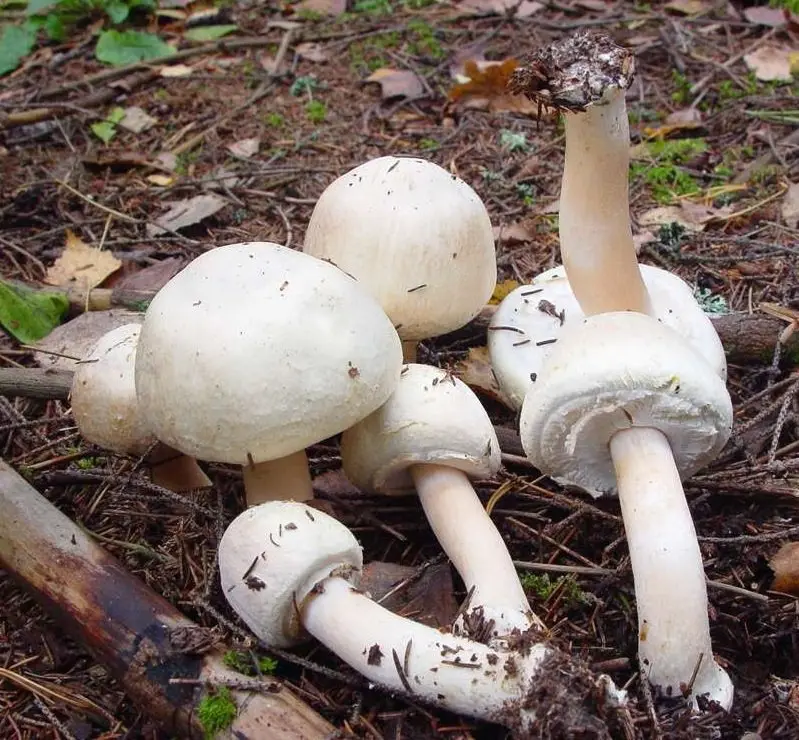Curve mushroom (Agaricus abruptibulbus)
- Division: Basidiomycota (Basidiomycetes)
- Subdivision: Agaricomycotina (Agaricomycetes)
- Class: Agaricomycetes (Agaricomycetes)
- Subclass: Agaricomycetidae (Agaricomycetes)
- Order: Agaricales (Agaric or Lamellar)
- Family: Agaricaceae (Champignon)
- Genus: Agaricus (champignon)
- Type: Agaricus abruptibulbus (Crooked mushroom)

The cap of this mushroom reaches 7-10 cm in diameter, at first it looks like a blunt bell, and then a truncated cone with plates covered with a veil and curved edges. Over time, it becomes prostrate. The surface of the cap is silky, white or cream in color (acquires a shade of ocher with age). In places of damage or when pressed, it turns yellow.
The fungus has thin, frequent, free plates, which at first have a white color, then it turns into red-brown, and at the end of the growth period it becomes black-brown. Spore powder is dark brown.
Curve champignon has a smooth cylindrical leg with a diameter of about 2 cm and a height of up to 8 cm, expanding towards the base. The stalk is fibrous, with a nodule base, becomes hollow with age, is similar in color to the cap and also turns yellow when pressed. The ring on the leg is single-layered, hanging down, wide and thin.
The mushroom consists of a fleshy dense pulp, yellowish or white, slightly yellowing on the cut, with a characteristic smell of anise.

It grows in coniferous forests from mid-summer to October. He likes to grow on the forest floor, often found in groups, but sometimes single specimens can be found.
This is an edible delicious mushroom., in taste it is in no way inferior to field champignon and is used in the same way (in the first and second courses, boiled, pickled or salted).
Curve champignon in appearance it resembles a pale grebe, but unlike it, it has a strong anise smell, there is no Volvo at the base, and yellowish spots form when pressed. It is more difficult to distinguish it from field champignon, only the place of distribution (coniferous forests) and the beginning of the fruiting period can serve as a characteristic feature.









